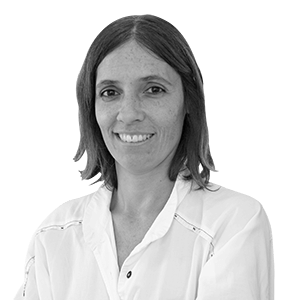"We must go out on streets to find people who have not yet been vaccinated"
The director of South Raval Health Centre proposes information points in mosques and secondary schools in the neighbourhood with the lowest immunisation rates in Barcelona


BarcelonaAbout 4,500 neighbours is the number the Drassanes Health Centre, in the neighbourhood of South Raval in Barcelona, knows have not been vaccinated although they are old enough to do so. They are the ones they need to convince to increase vaccination rates in the area where they are lowest. It is only this week they reached the 50% benchmark while other areas in the city have already surpassed 75%. At Drassanes Health Centre, the pace of vaccination is now kept constant, with about 140 jabs a day, after a drop in midsummer - as happened in most places. Many young people who work many hours with unpredictable schedules are receiving the vaccine now, which explains why not all the slots are used up. "How many failed to turn up this morning?", Paloma Prats, the nurse who runs the center, asks the team that manages the vaccination. The nurses admit they are "knackered" after the fifth wave caught them midway through the vaccination when they were just beginning to recover the centre's regular activity. Now the main goal is to inject as many vaccines as possible every day.
"We have to take advantage of all the doses. When there are some left over, we call doctors' surgeries, in case they have a patient who can come down to get vaccinated, and we always reserve slots for this opportunistic vaccination, in case someone comes to see their GP and we convince them to get vaccinated", explains Prats. It is clear, however, that it will not be enough with the many efforts that made within the walls of the health center and that to reach higher rates of vaccination, primary care will have to go and seek its patients outside. This is especially true in an area like South Raval, where more than half of the population is foreign (56% of the centre's patients) and the linguistic and cultural barriers mean that the calls for vaccination do not reach them as directly. "It is true that here we move at a slower pace, but you have to see why: there is the language barrier, the digital divide and a cultural issue of a different conception of health and vaccines, and also some misinformation that has spread about vaccines, as well as younger people's work schedules", she says.
To overcome all these barriers, Prats defends a connecting with the community to take vaccination out of the health centre, not only through mobile vaccination points where no prior appointment is required. This was already done on the Rambla del Raval with good results; however, the goal is to reach even more people. Rather than offering discounts on hotels or theatre shows, as the Health Department suggested - Prat believes this would cause suspicion as their consent would be "bought" - Prats suggested going into schools at the beginning of the school year and setting up vaccination points outside mosques on Fridays.
More resources
"We have to rethink what else can be done. The work of primary care is to work for the community; in the same way that we go into the homes of older patients who cannot move, we will have to go out to find people to vaccinate them", she argues. They assume that there is a percentage of reluctant population, ranging between 10% and 15%, among which there are many antivaxxers, who will be the most difficult to convince. Therefore, to achieve higher levels of community protection, they believe that now the efforts have to focus on the population who, until now, was not interested in getting vaccinated. "We must go out more and not only in the mobile vaccination points," says Prats, who points out that to make this possible more resources and a good organisation of the teams will be required.
At the moment, on Friday September 17 a mobile vaccination point will be installed on the Rambla del Raval. Prats celebrates that, this time, the information leaflet has been written in more languages to reach more people. The aim will be to vaccinate the maximum number of neighbours in the area and avoid, as has happened in other similar points, that it is approached by tourists.
